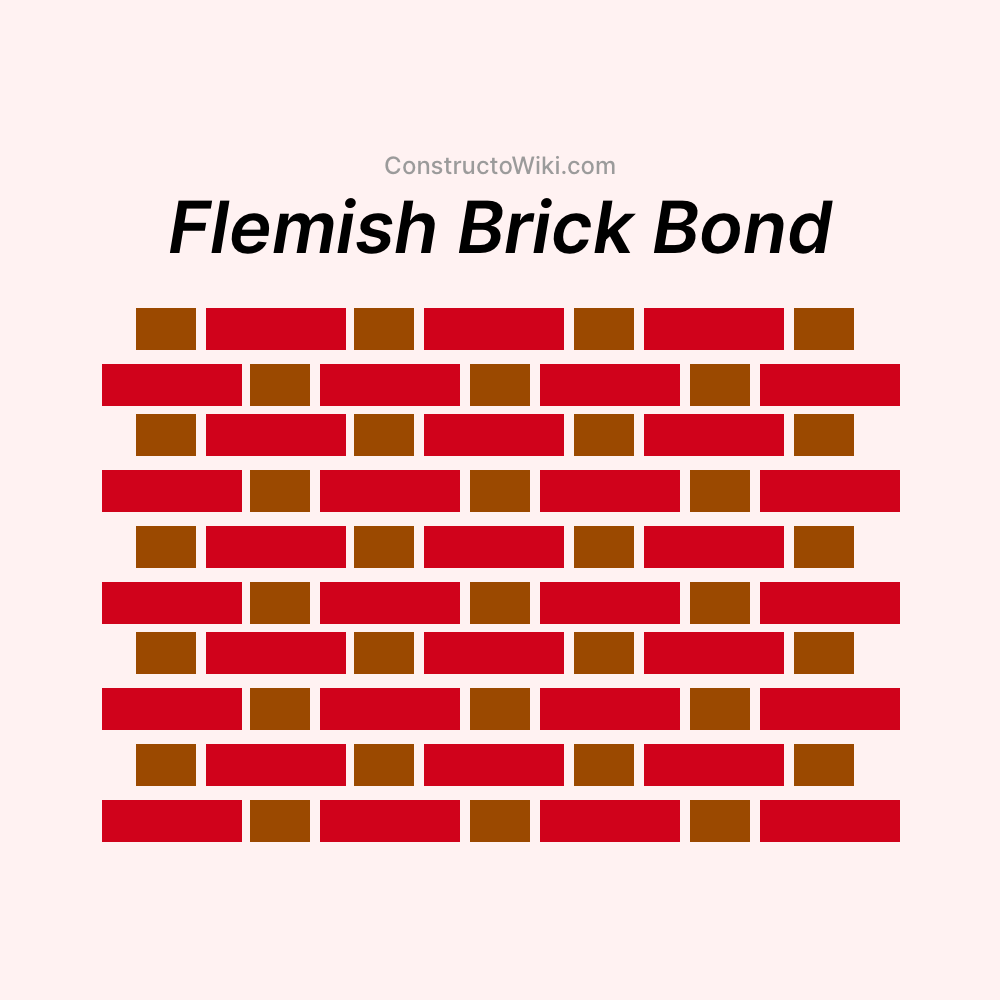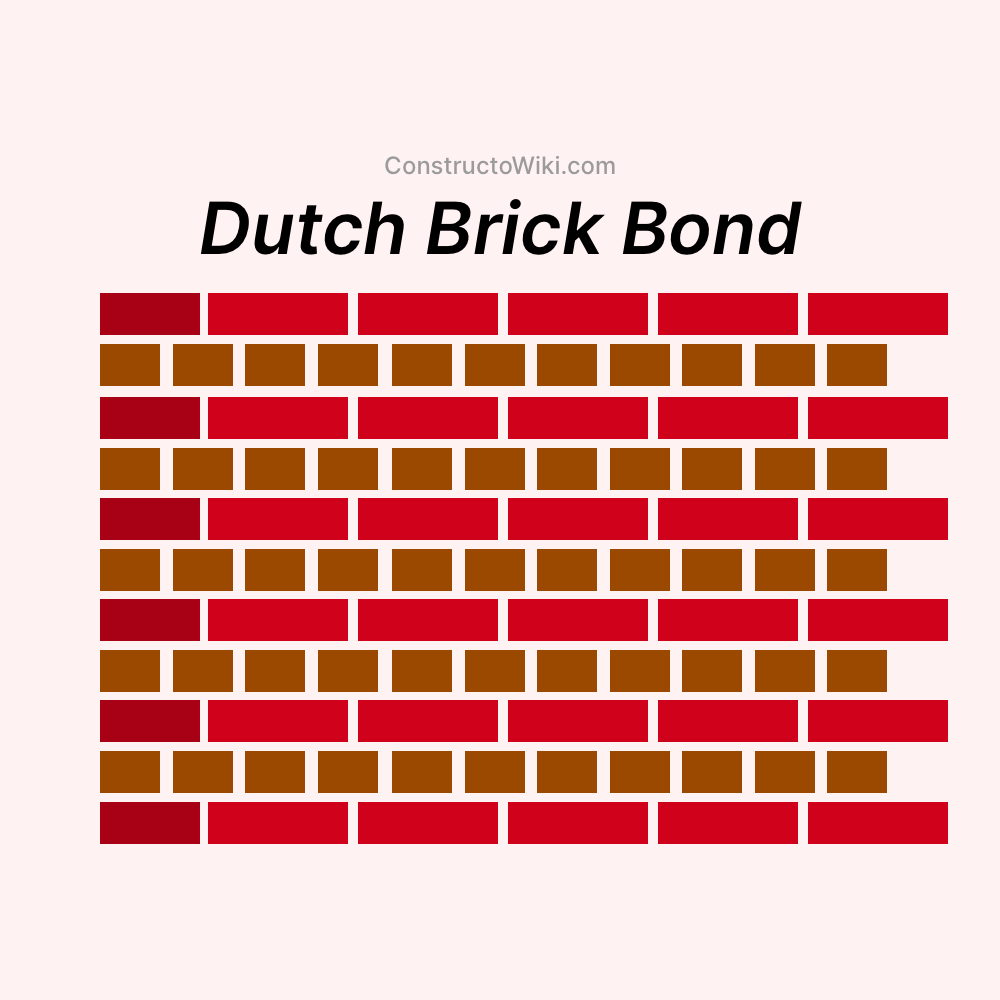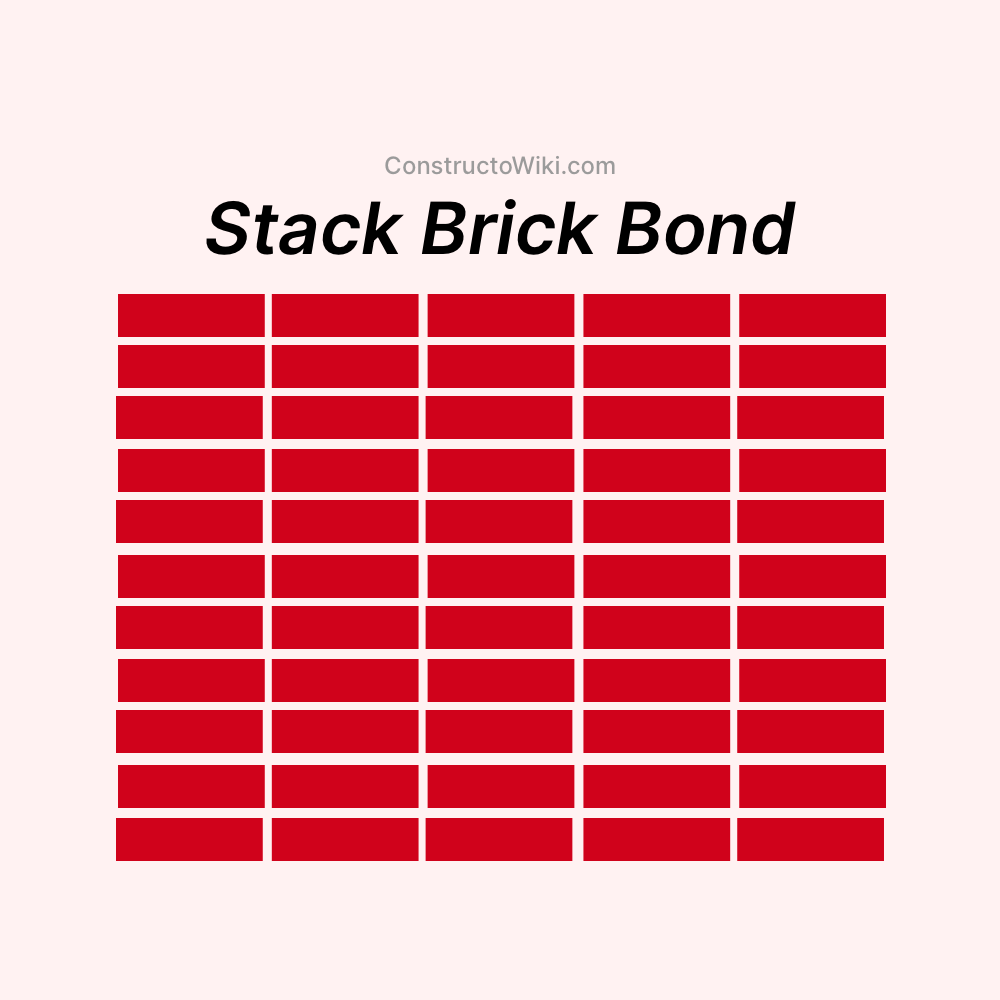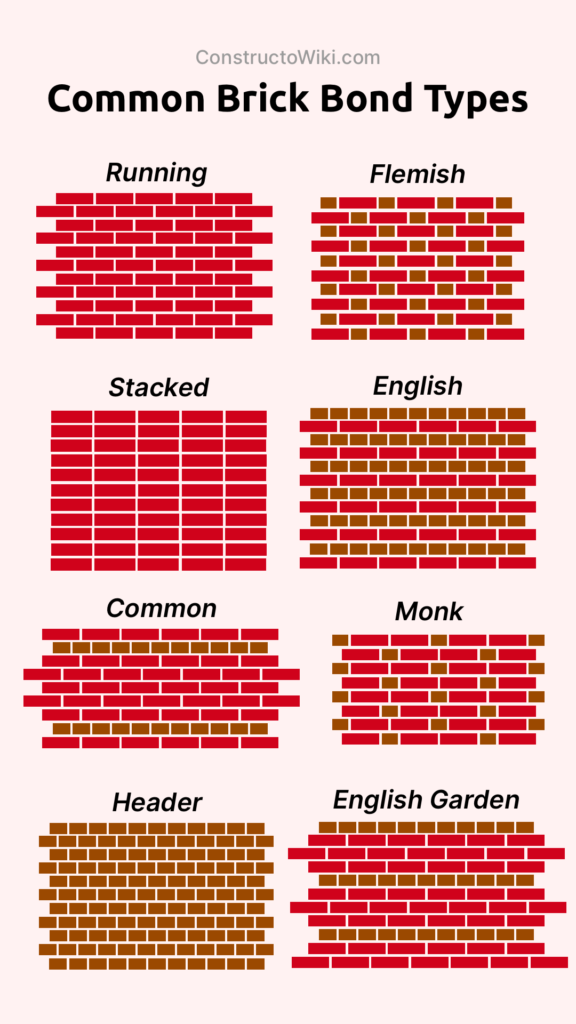Let’s Talk About Brick Patterns and Their Role in Construction
Today, we’re be walking through a comprehensive exploration of brick patterns, specifically focusing on the Flemish Bond, Dutch Bond, and Stack Bond.
As I’m sure you’re aware, the choice of brick pattern can greatly influence the strength and appearance of a construction project. Are you aware of the effect your choice of brick pattern could have on your building’s structural integrity and aesthetic appeal?
In this blog, we’ll examine the characteristics of each pattern, their applications, strengths, and limitations. We aim to equip you with an understanding to help you make an informed choice for your projects. We’ll look into the details of headers and stretchers and learn how their arrangement in different patterns affects the overall structure.
Throughout our discussion, we’ll pose some critical questions. Why, for example, is the Stack Bond considered the weakest pattern? Which bond is more visually appealing – the Flemish or the Dutch?
The answers to these questions and more await you. Buckle up, let’s get started!
Table of Contents
Understanding the Flemish Bond Brick Pattern in Construction

Introduction to Brick Patterns
Brick patterns, or bonds, significantly impact the strength and appearance of brick walls. Among these, the Flemish Bond is popular for its aesthetics and durability.
What is the Flemish Bond Brick Pattern?
The Flemish Bond is a bricklaying pattern where each course (horizontal layer) of bricks consists of alternating headers and stretchers.
Headers and Stretchers Defined
- Header: A brick laid flat with its short end facing out.
- Stretcher: A brick laid flat with its long side facing out.
Characteristics of the Flemish Bond
- Visual Appeal: Creates a checkerboard effect, popular in colonial buildings.
- Strength: Offers good structural integrity by distributing loads across both headers and stretchers.
- Symmetry: Evenly spaced joints provide a balanced and uniform look.
Applications of the Flemish Bond
The Flemish Bond is suitable for:
- Residential facades
- Garden walls
- Historical renovations
Comparison with Other Brick Patterns
| Brick Pattern | Strength | Complexity |
|---|---|---|
| Flemish Bond | High due to alternate headers and stretchers | Moderate |
| Running Bond | Moderate | Low |
| Stack Bond | Low | Low |
Source
For more detailed information, you can check out this Flemish bond explanation on Britannica.
Dutch versus Flemish Bond Brick Pattern

Basics of Dutch Bond Brick Pattern
The Dutch Bond is another popular brick pattern, distinguished by its unique arrangement—it involves a 3/4 bat to start each stretcher row, with a header row beneath.
Understanding the Dutch Bond
Unlike the Flemish bond featuring an alternating header and stretcher per course, the Dutch bond incorporates a 3/4 bat and all stretchers in a row (without a header). This results in a unique visual composition that’s as sturdy as it is distinctive.
Characteristics of the Dutch Bond
- Visual Diversity: The irregular arrangement of bricks contributes to a visually engaging pattern.
- Cost-effective: Requires fewer headers, economizing on materials without compromising strength.
- Aesthetic Flexibility: Well-suited for a variety of architectural styles and settings.
Applications of the Dutch Bond
The Dutch Bond sees applications in:
- Residential building exteriors
- Commercial premises
- Civic structures and public buildings
Dutch versus Flemish Bond: A Comparative Analysis
The Dutch and Flemish brick bonds differ in patterns, materials usage, and applications. Understanding these differences can help you choose the right bond for your construction project.
| Brick Pattern | Pattern Composition | Materials Usage |
|---|---|---|
| Flemish Bond | Alternating headers and stretchers in each course | Equal number of headers and stretchers |
| Dutch Bond | 3/4 bat and all stretchers in first course, all headers in next course | More headers than stretchers, brick cutting required |
Understanding the Differences Between Stack Bond and Flemish Bond in Construction

Exploring the Stack Bond Brick Pattern
The Stack Bond is a straightforward and modern brick pattern often used for its simple aesthetics. Unlike traditional bonds, it doesn’t interlock the bricks but stacks them directly on top of each other.
What is the Stack Bond?
The Stack Bond creates a visual where the vertical joints between bricks line up perfectly in each course. This method is faster to install compared to other bonds but does not provide the same level of stability.
Characteristics of the Stack Bond
- Simplicity: The pattern involves a direct vertical alignment, making it easy to lay out.
- Modern Aesthetic: Popular in contemporary architecture for its clean lines.
- Lower Structural Integrity: The lack of interlocking bricks results in weaker walls compared to more traditional patterns.
Applications of the Stack Bond
The Stack Bond is suitable for:
- Interior walls where appearance is prioritized over strength
- Non-load-bearing walls
- Facade cladding on modern buildings
Stack Bond versus Flemish Bond: Key Differences
Given the differences in their designs, the Stack Bond and Flemish Bond offer distinct advantages and drawbacks depending on the project’s needs.
| Brick Pattern | Strength | Complexity | Aesthetic |
|---|---|---|---|
| Stack Bond | Low due to no interlocking | Low | Minimalistic, modern |
| Flemish Bond | High due to alternating headers and stretchers | Moderate | Classic, symmetrical |
Materials Usage in Stack Bond
Since there is no alternating pattern of headers and stretchers, the Stack Bond primarily uses stretchers throughout. This can simplify material planning but calls for enhanced reinforcement to ensure stability.
Reinforcement Techniques for Stack Bond
To improve the structural integrity of walls using the Stack Bond, additional reinforcement methods are often applied:
- Steel mesh or rebar integrated vertically between courses
- Concrete backings or supports
- Horizontal reinforcement bars
Choosing the Right Bond for Your Project
The decision between using Stack Bond versus Flemish Bond largely depends on the project’s structural needs and aesthetic requirements. While the Stack Bond offers a sleek, modern look, it is less structurally sound than the Flemish Bond, which combines beauty with robustness. For further insights on brick patterns, you might find this guide by Architectural Digest very useful.
The Weakest Brick Pattern in Construction
What is the Stack Bond Brick Pattern?
The Stack Bond is widely considered the weakest brick pattern in construction. This pattern features bricks stacked directly on top of each other, aligning the vertical joints in each course.
Reasons Why Stack Bond is Weak
Several factors contribute to the Stack Bond’s lack of structural integrity:
- No Interlocking Bricks: Unlike more traditional patterns, the Stack Bond does not interlock the bricks, resulting in a wall that can easily crack under stress.
- Vertical Joint Line-Up: The vertical alignment of joints in the Stack Bond creates straight lines of weakness, making it susceptible to shearing forces.
- Minimal Load Distribution: With no headers to help distribute loading across the wall, the load transfers straight down through the vertical joints.
Common Uses for Stack Bond
Despite its weaknesses, the Stack Bond is still used in specific applications where its characteristics can be advantageous.
- Non-Load-Bearing Walls: Ideal for interior walls or facades where strength is not a significant concern.
- Architectural Features: Popular in modern architecture for its clean, minimalist appearance.
- Temporary Structures: Useful in structures where long-term stability is not necessary.
Improving the Structural Integrity of Stack Bond
While inherently weak, there are ways to bolster the Stack Bond’s structural performance through reinforcement techniques:
- Vertical Reinforcement: Integrating steel mesh or rebar can add vertical strength.
- Concrete Backing: Adding a concrete backing behind the brick wall can improve overall stability.
- Horizontal Reinforcement Bars: Placing horizontal rebar along courses can distribute loads more effectively.
Alternative Patterns for Better Strength
For applications where structural integrity is essential, consider using other brick patterns that offer better load distribution and durability.
| Brick Pattern | Relative Strength | Typical Use Cases |
|---|---|---|
| Running Bond | Moderate | General construction, exterior walls |
| Flemish Bond | High | Historical buildings, durable facades |
| English Bond | High | Large-scale structures, high-strength walls |
While the Stack Bond offers unique visual appeal and ease of construction, its lack of interlocking bricks makes it the weakest brick pattern in terms of structural integrity. For projects requiring both beauty and durability, consider more traditional patterns like the Flemish or English Bond.
Wrapping Up Brick Bonds in Construction

Choosing the right brick bond in construction largely comes down to the demands of aesthetics and structural integrity of a particular project.
The Flemish Bond, a symmetrical alternating pattern of headers and stretchers, boasts both visual appeal and strength. Its versatile application is witnessed in historical renovations, garden walls, and residential facades.
On the other hand, Dutch Bond, with its unique three stretchers and one header arrangement, offers cost-effectiveness and aesthetic flexibility. The Stack Bond, known for its simple and modern aesthetics, is the easiest to lay out but lacks the structural integrity of the other bonds due to its absence of interlocking bricks.
These comparative distinctions amongst the Flemish, Dutch, and Stack bonds are critical to making informed decisions in construction projects. Ultimately, the right brick bond choice will assist in fulfilling both, the project’s structural needs and aesthetic requirements.
Frequently Asked Questions – FAQs
What is the Flemish Bond in Bricklaying?
The Flemish Bond is a bricklaying pattern where each course (horizontal layer) of bricks consists of alternating headers and stretchers. It’s known for its aesthetic value and good structural integrity.
What are the main features of the Dutch Bond?
The Dutch Bond involves a course made up of alternating three stretchers and one header, creating a unique and visually engaging pattern. It is cost-effective and offers aesthetic adaptability to different architectural styles.
Why is the Stack Bond considered the weakest brick pattern?
The Stack Bond, featuring bricks stacked directly above each other, is considered the weakest due to its lack of interlocking bricks. This results in weaker walls that can easily crack under stress and are susceptible to shearing forces.
How can the structural integrity of a Stack Bond be improved?
The Stack Bond’s structural performance can be boosted by integrating steel mesh or rebar vertically between courses, adding a concrete backing behind the brick wall, and using horizontal reinforcement bars.






